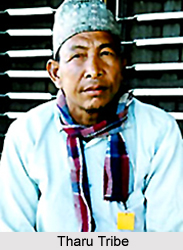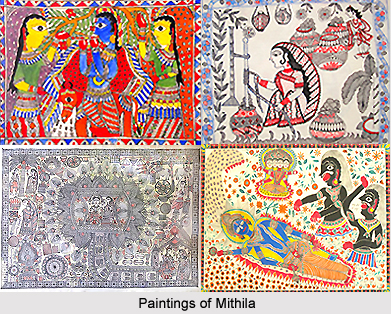 Madhubani District is one of the 38 administrative districts of Bihar and Madhubani town is the district headquarters. Madhubani District occupies a total area of 3501 sq kms. It is located at a longitude of 25 degree 59 minutes to 26 degree 39 minutes east and latitude of 85 degree 43 minutes to 86 degree 42 minutes north. Madhubani District is situated at height of 80 meters above the sea level. This district is bounded on the north by a hill region of Nepal and extending to the border of Darbhanga District in the south, by Sitamarhi District in the west and by Supaul in the east. Madhubani fairly represents the centre of the territory once known as Mithila and the district has maintained a distinct individuality of its own.
Madhubani District is one of the 38 administrative districts of Bihar and Madhubani town is the district headquarters. Madhubani District occupies a total area of 3501 sq kms. It is located at a longitude of 25 degree 59 minutes to 26 degree 39 minutes east and latitude of 85 degree 43 minutes to 86 degree 42 minutes north. Madhubani District is situated at height of 80 meters above the sea level. This district is bounded on the north by a hill region of Nepal and extending to the border of Darbhanga District in the south, by Sitamarhi District in the west and by Supaul in the east. Madhubani fairly represents the centre of the territory once known as Mithila and the district has maintained a distinct individuality of its own.
History of Madhubani District
Madhubani District was formerly a part of Darbhanga District. In the year 1972, it was carved out as a separate district. Tharu tribe and Bhar were the early inhabitants of this region. Videha kingdom also included a huge portion of Madhubani District. After the decisive Battle of Buxar in the year 1764, British East India Company took over the control of Madhubani and other parts of Bihar. Madhubani District had played a great role in the freedom struggle of India.
Geography of Madhubani District
Madhubani District comprises vast plain and alluvial lands. Geography of Madhubani District also includes various rivers like Bagmati River, Kamla River, Kareh River, Balan River and Tiljuga River. The district has a pleasant climate with three main seasons - cold weather season, hot and dry weather season and rainy season. Winter season starts in November and continues until February. After that westerly winds start to blow and the temperature rises up to 42 degree Celsius. Rainy season sets in June and temperature begins to fall. It continues till September or mid-October.
 Demography of Madhubani District
Demography of Madhubani District
The population Census 2011 says that Madhubani District had population of 4,476,044 of which male and female were 2,324,984 and 2,151,060 respectively. The population of Madhubani District constituted 4.31 percent of total population of Bihar. The average literacy rate of Madhubani in 2011 was 60.90 compared to 41.97 of 2001. If things are looked out at gender wise, male and female literacy were 72.53 and 48.30 respectively. The total literates in Madhubani District were 2,251,107 of which male and female were 1,393,708 and 857,399 respectively.
Economy of Madhubani District
Economy of Madhubani District is basically dependent on agriculture. Major crops grown in the district are Wheat, Sugarcane and Pulses. Rearing of cattle is an important subsidiary occupation of the district. The district is well stocked with cattle. A number of veterinary hospitals and dispensaries have been opened at different centres in the district which has reduced the mortality of cattle. In terms of trade and commerce, this district exports fish, handloom cloth, mangoes, sugarcane, paddy, and brass metal articles to various cities insides and outside the state. It imports medicine, machine, fine clothes, shoes, and cosmetic materials from other places. A number of rice mills and timber saw mills have been set up in the district. Madhubani has been an important centre for trade.
Culture of Madhubani District
Spinning and weaving are very old and highly developed handicrafts in Madhubani District. The Khadi Gramodyog Centre located at Madhubani is famous for weaving. This speaks of the high quality of the handloom textile of the district. The famous Madhubani Painting or the Mithilia Painting as it is known is also the handwork of the people especially the women of Madhubani.
Tourism in Madhubani District
Tourism in Madhubani District includes some major places of interest are Andhratharhi, Balirajpur, Mangrauni, Ucchaith, Bhawanipur, Saurath, Satghara and Bisfi. This district is popular for its religious sites. There are some historical sites too. These attractions draw the attention of people from all parts. Travellers visiting this place will surely have a memorable experience.






